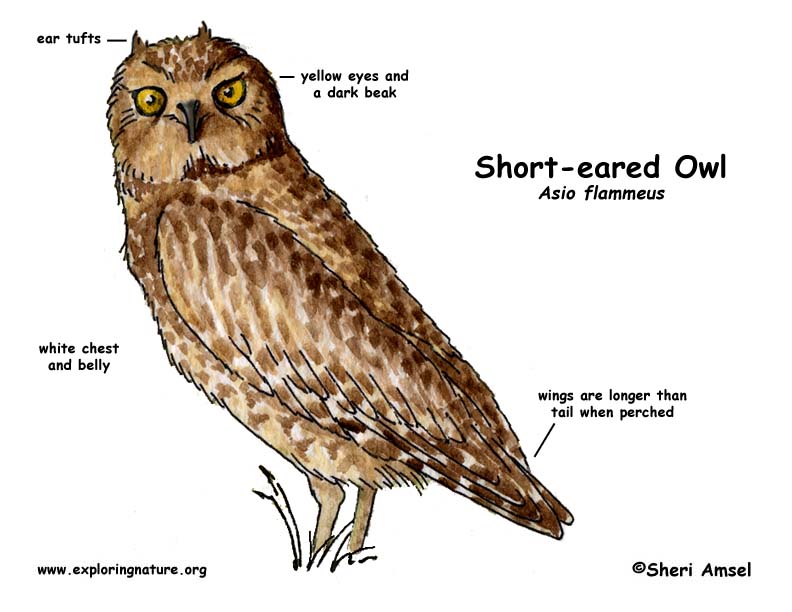

Short-eared owls are found throughout North America and Eurasia, and on every continent except Australia.
They live mostly on grasslands wherever small mammals live, that they can eat. They are also found on tundra, shrub-steppe, and open marshlands.
They are medium-sized owls with two small ear tufts of feathers along the top of the head that are not really ears at all. They have a round, pale face. The back is brown with white spots, while the chest and belly are white (and reddish in females) with brown streaks. When perched, their wings are longer than their tail.
They hunt at dawn and dusk and are often seen active during the day.
They eat small mammals, especially voles, and sometimes birds and insects. They fly low over the grassland and dive onto prey.
They are territorial with their breeding areas. They nest on the ground building grassy cups, lined with down. The females lay 4 – 9 eggs. In years where there is lots of food, they may lay more eggs.
When you research information you must cite the reference. Citing for websites is different from citing from books, magazines and periodicals. The style of citing shown here is from the MLA Style Citations (Modern Language Association).
When citing a WEBSITE the general format is as follows.
Author Last Name, First Name(s). "Title: Subtitle of Part of Web Page, if appropriate." Title: Subtitle: Section of Page if appropriate. Sponsoring/Publishing Agency, If Given. Additional significant descriptive information. Date of Electronic Publication or other Date, such as Last Updated. Day Month Year of access < URL >.
Amsel, Sheri. "Owl (Short-eared)" Exploring Nature Educational Resource ©2005-2024. December 14, 2024
< http://www.exploringnature.org/db/view/146 >

